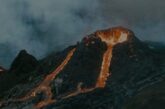
How Turkey s New E-Visa Program Is Set to Boost Travel
Almasalla Arab Travel Portal News – Turkey is stepping up several new initiatives to bring in more traffic this year. Key among them is a new policy requiring “e-visas” for entrance to the country, replacing the former process of filling out paperwork upon landing at the airport. Travelers can apply for the visa online and print it at home. Unlike traditional stamp or sticker visas, these paper visas must be carried at all times during travel and must be presented to airport officials and customs officers upon request. (Good to know: Turkey will maintain its traditional visa program for the remainder of the 2014 tourism season, giving time to potential travelers to become aware of the new policy.)
“The e-visa system will speed up the entrance process as there will be no paperwork to be done once arriving to Turkey,” Emin Kaya, director of the Turkish Culture and Tourist Office, told Travel Agent. “An e-visa can be obtained easily anywhere there is internet connection and enables the holder to submit application without waiting in the queue at the Turkish embassies or consulates or at the border crossing.”
Alp Ozaman, regional marketing manager, New York for Turkish Airlines, told Travel Agent that the new visas would speed up the entrance process for getting international travelers into Turkey. “Although the lines are never too long at the visa desk, waiting times vary depending on the number of arrivals at a given time,” he explained, adding that the new visas would eliminate the anxiety of locating the visa desk for passengers who have never done so before.
Ozaman believes that the new policy will also make travel to Turkey easier for more people. “Turkey is a very friendly destination for visitors,” he said, “and efforts are being made constantly to make the experience even a better one for everybody. If visa requirements is a variable in an individual’s decision-making process, then this tool should make it much easier to consider Turkey as a destination.”
Turkish Airlines has a section on its website for online visa applications. “We also communicate the fact to our business partners so they can notify their customers,” Ozaman added. For those who prefer to get their visas upon arrival Turkish Airlines can also help passengers find the visa desk at Istanbul Ataturk Airport and explain the procedure. “Those passengers who want to get their visa prior to their departure can do that by contacting the embassy or consulates of Republic of Turkey in the USA,” he said..
Good to know: Travelers who feel uncomfortable with applying for a visa online can still apply and obtain for a visa at Turkish consulates and the Turkish Embassy in the United States.
Additional information can be found at www.evisa.gov.tr/en and www.mfa.gov.tr/visa-information-for-foreigners.en.mfa.

New Tourism Developments
Beyond the new visa policy, Turkey has announced several new developments for 2014. The country’s first (and, so far, only) mixed-use project, the Zorlu Center, opened late last year with a culture and art center, a luxury hotel, business center, shopping mall and elite residences in Zincirlikuyu, close to Istanbul’s financial district. The Performing Arts Center within the Zorlu Center will have two theatres (one seating 2,300, the other 770), making it Istanbul’s largest multi-purpose performing arts center.
One of Istanbul’s most popular Ottoman landmarks, the Topkapi Palace, recently completed significant restorations and renovations to highlight its original design. The pools of the palace, constructed in 1478 by Fatih Sultan Mehmet, have been reopened–the “Selsebil” pool alone has 19 faucets in the Privacy Chamber (Has Oda) of Murad III.
Two prayer rooms, Karaağalar and Kadınlar, have been restored to their original appearance, while the Sacred Relics, among the best known areas of the palace, have been cleaned and restored. Around the palace grounds, the historic Gülhane (rose garden) was reconstructed with 40,000 roses, while the hyacinth and tulip gardens were opened with about 500,000 hyacinths and tulips planted around the museum.







